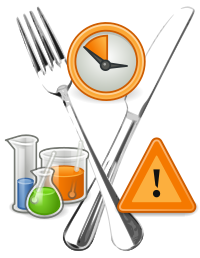
Photo from wikipedia
Background A wide variety of pathogens can cause disease in humans via consumption of contaminated food. Although food-borne outbreaks only account for a small part of the food-borne disease burden,… Click to show full abstract
Background A wide variety of pathogens can cause disease in humans via consumption of contaminated food. Although food-borne outbreaks only account for a small part of the food-borne disease burden, outbreak surveillance can provide insights about the pathogens, food products implied as vehicle, points of contamination, and the settings in which transmission occurs. Aim To describe the characteristics of food-borne outbreaks registered between 2006 and 2019 in the Netherlands. Methods All reported outbreaks in which the first case occurred during 2006–19 were analysed. We examined the number of outbreaks, cases and setting by year, aetiology, type of evidence and food commodities. Results In total, 5,657 food-borne outbreaks with 27,711 cases were identified. The contaminated food product could be confirmed in 152 outbreaks (2.7%); in 514 outbreaks (9.1%), a pathogen was detected in cases and/or environmental swabs. Norovirus caused most outbreaks (205/666) and most related cases (4,436/9,532), followed by Salmonella spp. (188 outbreaks; 3,323 cases) and Campylobacter spp. (150 outbreaks; 601 cases). Bacillus cereus was most often found in outbreaks with a confirmed food vehicle (38/152). Additionally, a connection was seen between some pathogens and food commodities. Public eating places were most often mentioned as a setting where the food implicated in the outbreak was prepared. Conclusion Long-term analysis of food-borne outbreaks confirms a persistent occurrence. Control and elimination of food-borne illness is complicated since multiple pathogens can cause illness via a vast array of food products and, in the majority of the outbreaks, the pathogen remains unknown.
Journal Title: Eurosurveillance
Year Published: 2022
Link to full text (if available)
Share on Social Media: Sign Up to like & get
recommendations!